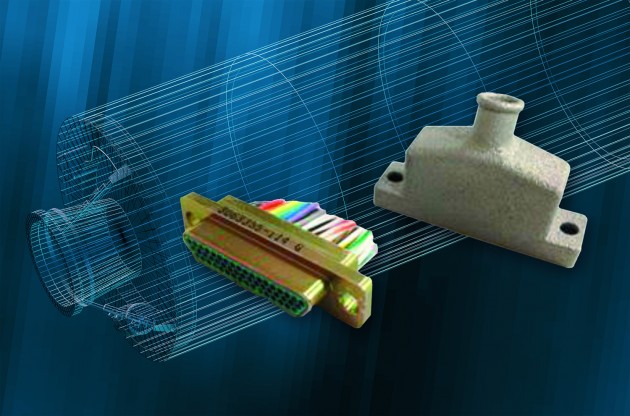
U.S. Navy Missile flies with its first 3D printed component
Staff
Additive Manufacturing Defense 3D printing Additive Manufacturing lockheed martinDigital engineering of the 3D printed part cuts in half the time to design and fabricate the part.
The first 3D printed missile component was integrated into three Lockheed Martin’s Trident II D5 Fleet Ballistic Missiles, which successfully completed test flights.

3D printed connector backshell flew in a Trident II D5 fleet ballistic missile test flight. Photo: Lockheed Martin.
Lockheed Martin engineers designed and fabricated the new connector backshell component in half the time of traditional methods. The 3D printed part, which protects cable connectors in the missile, is made from an aluminum alloy and measures about an inch across.
This is not the first example of Lockheed Martin’s push to get 3D printed parts in flight, the company has flown additively manufactured parts on planetary probes, satellites and spacecraft for human use. Lockheed Martin has been working to develop an integrated manufacturing system, Digital Tapestry, which improves products and processes through connecting a product’s digital life from concept to product through service. This particular 3D printed component for the D5 missile is an example of how the system works. Digital engineering of the 3D printed connector backshell component cuts in half the time it takes to design and fabricate the part.
The D5 missile now has achieved a total of 160 successful test flights since design completion in 1989. In the most recent tests, the Navy launched the unarmed missiles in the Atlantic Ocean from a submerged submarine. The missiles were converted into test configurations using kits produced by Lockheed Martin that contain range safety devices and flight telemetry instrumentation.
“These tests demonstrate the readiness and reliability of this crucial system that protects what matters most for the nation,” said Eric Scherff, vice president of Fleet Ballistic Missile programs, Lockheed Martin Space Systems. “The Trident Strategic Weapon System stands guard every minute of every day, thanks to the dedication and forward thinking of the Navy program office, the submarine crews and the industry team.”
